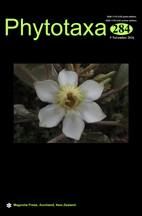Abstract
We investigated the populations of Saxifraga ser. Saxifraga (Saxifragaceae) on the islands of Capraia, Elba and Montecristo. These Italian islands form part of the Tuscan Archipelago group, in the north-central Mediterranean. The plant populations we report lie on the boundary between the ranges of the two species: S. granulata and S. corsica. We analysed specimens from the islands of Capraia, Montecristo and Elba, together with specimens from the Italian Apennines, and others from the islands of Corsica and Sardinia. The study focused on both the qualitative and quantitative morphological and karyological traits of these plants. The populations from the Tuscan Archipelago can be assigned to two distinct groups. The Elba population is morphologically close to S. granulata subsp. granulata. On the other hand, Capraia and Montecristo populations belong to the group of S. granulata s.l. and are indeed very similar to S. corsica but, at the same time, they show some distinctive morphological characters. The karyological studies show low chromosome counts (2n = 20–22) for the Elba and Apennine populations and higher chromosome counts (2n = 44–56) for the Capraia and Montecristo ones - similar to S. corsica. Based on these results, and on the geographical isolation of these populations, we describe two new taxa for Capraia and Montecristo, S. caprariae and S. montis-christi, respectively. The Elba population can be attributed to S. granulata subsp. granulata. Lastly, we provide an identification key for the Italian taxa belonging to S. ser. Saxifraga.

